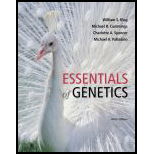
A researcher was asked if his work on human telomere replication was related to any genetic disorders. He replied that one might think that any such mutations would be lethal during early development, but in fact a rare human genetic disorder affecting telomeres is known. This disorder, dyskeratosiscongenita (DKC), is associated with mutations in the protein subunits of telomerase, the enzyme responsible for replicating the ends of eukaryotic chromosomes. Initial symptoms appear in tissues derived from rapidly dividing cells, including the skin, nails, and bone marrow, and first affect children between the ages of 5 and 15 years.
How could such individuals survive?
To review:
The survivability of people with Dyskeratosis congenita (DKC).
Introduction:
Dyskeratosis congenital (DKC) is a rare genetic X chromosome-linked disease. Initial symptoms of this disease show up between the age of 5 to 15 years. People with DKC has the mutation on telomerase gene thus has non-functional telomerase. This disease affects the tissues with rapidly growing cells like skin, nails, and bone marrow.
Explanation of Solution
The tail region of the eukaryotic chromosome is known as the telomere. This region does not contain any functional genes but only guanine and a cytosine-rich tandem repeat of nucleotides. DNA (deoxyribonucleic acid) polymerase responsible for DNA replication cannot replicate the telomere region efficiently. Thus telomerase play a crucial role in replication of telomere. Here in case of persons withDyskeratosis congenita (DKC), after every successful cell division, a part of the telomere region gets lost in the newly divided cell. This problem is known as end replication problem.
The eukaryotic cells use telomerase to replicate telomere, which can successfully replicate the telomere region without losing any of its regions. The whole telomere region of the people with non-functional telomerase gets lost after a few early cell division. However, as this telomere region does not has any functional genes that could affect the cell functionality, early cell divisions can occur smoothly.
The patients can survive early development. Once the whole telomere region gets lost and functional genes present near the telomere region starts getting lost due to further cell division, only then, the patients show symptoms of DKC. That occursnormally between 5- 15 years of age.
Dyskeratosis congenita (DKC) appears among people who have mutated loss-in-function telomerase. Therefore, it can be concluded that the people with non-functional telomerase can survive early development. After that, they will start showing symptoms ofDKC, which includes nail dystrophy, abnormal skin pigmentation, and bone marrow failure.
Want to see more full solutions like this?
Chapter 10 Solutions
Essentials of Genetics (9th Edition) - Standalone book
- Explain how the hormones of the glands listed below travel around the body to target organs and tissues : Pituitary gland Hypothalamus Thyroid Parathyroid Adrenal Pineal Pancreas(islets of langerhans) Gonads (testes and ovaries) Placentaarrow_forwardWhat are the functions of the hormones produced in the glands listed below: Pituitary gland Hypothalamus Thyroid Parathyroid Adrenal Pineal Pancreas(islets of langerhans) Gonads (testes and ovaries) Placentaarrow_forwardDescribe the hormones produced in the glands listed below: Pituitary gland Hypothalamus Thyroid Parathyroid Adrenal Pineal Pancreas(islets of langerhans) Gonads (testes and ovaries) Placentaarrow_forward
- Please help me calculate drug dosage from the following information: Patient weight: 35 pounds, so 15.9 kilograms (got this by dividing 35 pounds by 2.2 kilograms) Drug dose: 0.05mg/kg Drug concentration: 2mg/mLarrow_forwardA 25-year-old woman presents to the emergency department with a 2-day history of fever, chills, severe headache, and confusion. She recently returned from a trip to sub-Saharan Africa, where she did not take malaria prophylaxis. On examination, she is febrile (39.8°C/103.6°F) and hypotensive. Laboratory studies reveal hemoglobin of 8.0 g/dL, platelet count of 50,000/μL, and evidence of hemoglobinuria. A peripheral blood smear shows ring forms and banana-shaped gametocytes. Which of the following Plasmodium species is most likely responsible for her severe symptoms? A. Plasmodium vivax B. Plasmodium ovale C. Plasmodium malariae D. Plasmodium falciparumarrow_forwardStandard Concentration (caffeine) mg/L Absorbance Reading 10 0.322 20 0.697 40 1.535 60 2.520 80 3.100arrow_forward
- please draw in the answers, thank youarrow_forwarda. On this first grid, assume that the DNA and RNA templates are read left to right. DNA DNA mRNA codon tRNA anticodon polypeptide _strand strand C с A T G A U G C A TRP b. Now do this AGAIN assuming that the DNA and RNA templates are read right to left. DNA DNA strand strand C mRNA codon tRNA anticodon polypeptide 0 A T G A U G с A TRParrow_forwardplease answer all question below with the following answer choice, thank you!arrow_forward
 Human Heredity: Principles and Issues (MindTap Co...BiologyISBN:9781305251052Author:Michael CummingsPublisher:Cengage LearningEssentials of Pharmacology for Health ProfessionsNursingISBN:9781305441620Author:WOODROWPublisher:Cengage
Human Heredity: Principles and Issues (MindTap Co...BiologyISBN:9781305251052Author:Michael CummingsPublisher:Cengage LearningEssentials of Pharmacology for Health ProfessionsNursingISBN:9781305441620Author:WOODROWPublisher:Cengage
 Concepts of BiologyBiologyISBN:9781938168116Author:Samantha Fowler, Rebecca Roush, James WisePublisher:OpenStax College
Concepts of BiologyBiologyISBN:9781938168116Author:Samantha Fowler, Rebecca Roush, James WisePublisher:OpenStax College Biology (MindTap Course List)BiologyISBN:9781337392938Author:Eldra Solomon, Charles Martin, Diana W. Martin, Linda R. BergPublisher:Cengage Learning
Biology (MindTap Course List)BiologyISBN:9781337392938Author:Eldra Solomon, Charles Martin, Diana W. Martin, Linda R. BergPublisher:Cengage Learning





